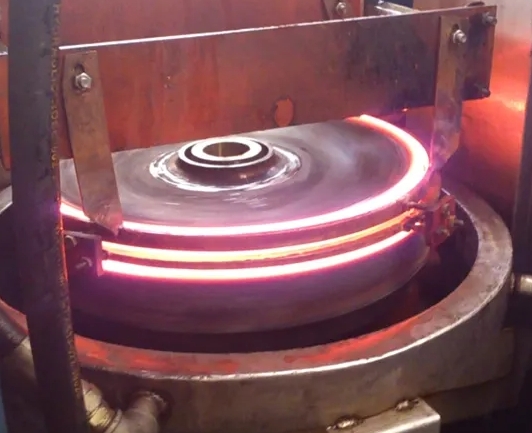- 21
- Jul
Opsomming van tien algemene blusmetodes van hoëfrekwensie blusmasjien (1)
Opsomming van tien algemene blusmetodes van hoë frekwensie blusmasjien (1)
1. Single medium (water, oil, air) quenching
Single medium (water, oil, air) quenching: Quenching the workpiece that has been heated to the quenching temperature into a quenching medium to cool it completely. This is a simpler quenching method and is often used for carbon and alloy steel workpieces with simple shapes. The quenching medium is selected according to the heat transfer coefficient, hardenability, size and shape of the parts.
2. Dubbel medium blus
Dual-medium quenching: The workpiece heated to the quenching temperature is first cooled to the Ms point in the quenching medium of a high-frequency heating machine with strong cooling capacity, and then transferred to the slow-cooling quenching medium to cool to room temperature to achieve different quenching cooling temperatures range, and has an ideal quenching cooling rate. It is used for complex shapes or large workpieces made of high carbon steel and alloy steel, and carbon tool steel is also mostly used in this method. Commonly used cooling media are water-oil, water-nitrate, water-air, oil-air. Generally, water is used as a quick-cooling quenching medium, oil or air is used as a slow-cooling quenching medium, and air is less used.
3. Martensite graded quenching
Martensitiese gegradeerde blus: Die staal word geaustenitiseer, en dan gedompel in ‘n vloeibare medium (soutbad of alkalibad) met ‘n temperatuur effens hoër of laer as die boonste Martens-punt van die staal, gehou vir ‘n gepaste tyd, en die binne- en buitekant dele van die staal word behandel. Nadat die laag die medium temperatuur bereik het, word dit uitgehaal vir lugverkoeling, en die onderverkoelde austeniet word stadig omskep in ‘n blusproses van martensiet. Dit word oor die algemeen gebruik vir klein werkstukke met komplekse vorms en streng vervormingsvereistes, en hoëspoedstaal- en hoëlegeringsstaalgereedskap en -matryse word ook algemeen deur hierdie metode geblus.
4. Martensite graded quenching method below Ms point
Martensitic graded quenching method below Ms point: When the bath temperature is lower than the Ms of the workpiece steel and higher than Mf, the workpiece cools faster in the bath, and the same result as the graded quenching can be obtained when the size is larger. Commonly used for larger size low hardenability steel workpieces.
5. Bainite isothermal quenching method
Bainite isothermal quenching method: The workpiece is quenched into a bath with the lower bainite temperature of the steel at an isothermal temperature, so that the lower bainite transformation occurs. Generally, it is kept in the bath for 30~60min. There are three main steps in the bainite isothermal quenching process: ① austenitizing treatment; ② cooling treatment after austenitizing;

